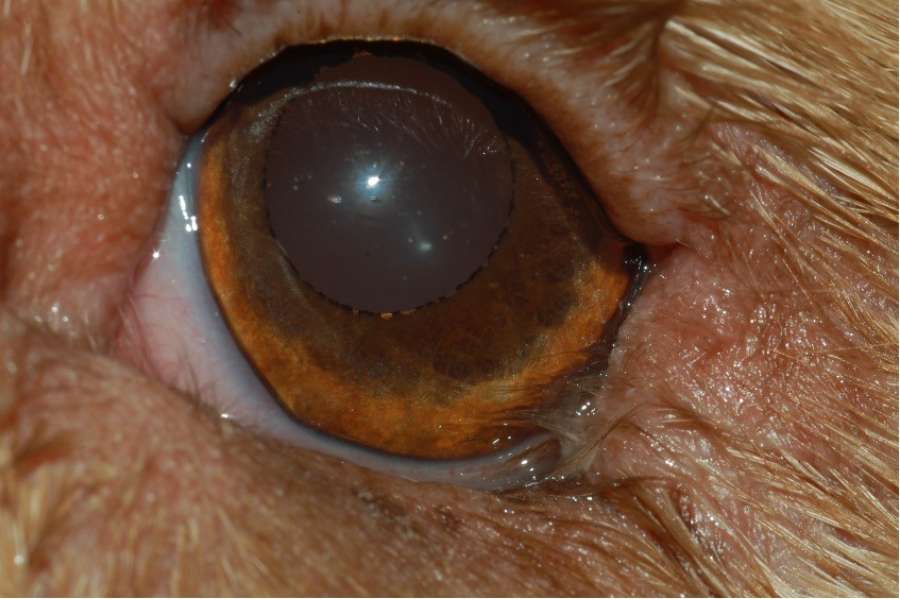Entropion
Entropion is where the upper or lower eyelids turn inwards and eyelashes rub on the cornea (clear surface of the eye) causing pain and irritation. Over time, corneal ulcers (open sores) and eye infections develop. If left untreated, entropion can cause scarring and even blindness.

Causes of entropion
Hereditary (passed from parents to puppies) - breeds more likely to develop entropion often have lots of skin folds around their eyes. They include:
Staffordshire bull terriers, Pugs, Shar Peis, Bulldogs, Clumber spaniels, Cocker spaniels, Springer spaniels, Labrador retrievers, Shih Tzus, Bassett hounds, Golden retrievers.
Puppies with hereditary entropion usually have symptoms by the time they’re a year old, often much younger. Usually both eyes are affected.
Secondary to conjunctivitis (eye infection) or other painful conditions. Pain can cause eyelids to spasm (muscles squeeze tightly) leading to inwards turning eyelids. Some conditions cause the eyeball to sink back into the socket changing the shape of the dog’s eye which leads to entropion.
Age – your dog’s skin may start to sag as they get older (just like ours!) causing more skin folds around their eyes.
Signs and diagnosis of entropion
Entropion is painful; your dog may squint and blink or even keep their eye closed. Often you’ll notice a sticky or watery discharge from the eye. In an attempt to relieve their pain, your dog might rub their face on the ground or along furniture.
Diagnosing entropion
Your vet will diagnose entropion by assessing the conformation (shape) of your dog’s eyelids. They can check for corneal ulceration and other causes of eye irritation such as eyelash problems and foreign bodies (e.g. grass seeds).
What treatment is available?
Your dog will need surgery once they reach their adult head-size (usually around a year old). If your puppy has severe entropion causing corneal ulceration, we may need to carry out a procedure sooner.
We can work with your vet and plan how to best manage your dog’s entropion. Your dog might need pain relief and eye creams in the time leading up to their surgery.
What does the surgery involve?
We’ll admit your dog on the morning of surgery then carry out a full
health check to make sure they’re well enough for the operation.
Your dog will have a general anaesthetic (be fully asleep) while we carry out the surgery. Our nurses carefully monitor your dog throughout and while they recover.
Most dogs with entropion need their eyelids shortening and everting (turning outwards) but we tailor the procedure for your dog’s individual need.
After surgery, your dog will have small wounds below the eyelids. We don’t need to remove these stitches as they dissolve on their own.
Your dog will need to wear a buster collar at all times for 10 days to prevent him/her scratching and rubbing the wounds. We’ll arrange follow up appointments to check your dog’s progress.
What about cats?
Hereditary entropion is less common in cats. Cats with eye pain or elderly cats who have lost weight can also develop entropion.
Just as for dogs, entropion causes severe pain and can lead to corneal ulceration. Most cats with entropion need corrective surgery. At Focus, we have feline-friendly facilities to make sure your cat’s stay with us is as stress-free as possible.
If you’d like to find out how Focus can help treat your pet’s entropion, please ask your vet to get in touch with us.

